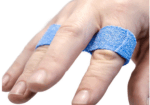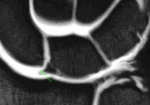New Distal Bicep Tendinopathy Provocative Test for Hand Therapist
Filed under Evaluation
Caekebeke, P., Schenkels, E., Bell, S. N., & van Riet, R. (2021). Distal biceps provocation test. The Journal of Hand Surgery.
The Skinny:
These surgeons were looking for a provocative test for distal bicep tendinopathy (distal biceps tendonitis test), specifically partial tears, that was more sensitive and specific. Complete tears are more easily tested in the clinic, but more precise tests are needed for partial tears before MRI use is warranted. This study investigated the merits of the Bicep Provocative Test (BPT).
In The Weeds:
The BPT is conducted with the patient’s arm flexed at 70 degrees. Step one is isometric flexion against resistance in supination. Step 2 (BPTp) is the same stimulus with the forearm in pronation. The pronated position is postulated to create more pain response with this test, given that the distal bicep tendon’s attachment to the radial tuberosity results in different mechanics in supination versus pronation.
“The distal biceps tendon wraps around the radial tuberosity when the arm is pronated, and the tendon is stretched and compressed when the biceps is activated”
The BPT was conducted on 60 individuals in a double-blind manner. Thirty individuals had suspected distal bicep pathology and 30 patients with other pathology of the elbow. Results of the provocative test were confirmed with MRI or from surgical findings.
Taking it Home:
The BPT produced a sensitivity and specificity of 100% each. The pronation position produced increased pain versus the supinated position by 5-6 points on the visual analog scale (0-10). This suggests that the pronated position might be more sensitive on a larger sample size. This provides therapists with a clinic-based provocative test to direct care or outside referral for partial distal bicep tendon pathology.
Rating: 4/5
The sample size for this study was relatively small at 60 participants, and the sensitivity and specificity would almost certainly be less than 100% with more participants. Overall, however, this is a well-written article that introduces a new provocative test that clarifies the identification of an otherwise difficult to diagnose pathology.
3 Comments
Leave a Comment
More To Read
Arthrodesis vs Arthroplasty in Thumb CMC OA
Piacenza A, Vittonetto D, Rossello MI, Testa M. Arthrodesis Versus Arthroplasty in Thumb Carpometacarpal Osteoarthritis: Impact on Maximal Voluntary Force, Endurance, and Accuracy of Pinch. J Hand Surg Am. 2021 May 24:S0363-5023(21)00199-4. doi: 10.1016/j.jhsa.2021.03.023. Epub ahead of print. PMID: 34045112. The Skinny: This was a retrospective study based on a convenience sample of individuals who…
Read MoreA randomized clinical trial comparing early active motion programs: Earlier hand function, TAM, and orthotic satisfaction with a relative motion extension program for zones V and VI extensor tendon repairs
By Brittany Day Collocott SJ, Kelly E, Foster M, Myhr H, Wang A, Ellis RF. A randomized clinical trial comparing early active motion programs: Earlier hand function, TAM, and orthotic satisfaction with a relative motion extension program for zones V and VI extensor tendon repairs. Journal of Hand Therapy. 2019. doi:10.1016/j.jht.2018.10.003 The Skinny- This is…
Read MoreScapholunate Wrist Injuries in Hand Therapy
Scapholunate Wrist Injuries in Hand Therapy In outpatient hand therapy, we get a variety of referrals ranging from post-operative patients to those looking to avoid or prolong surgery. These referrals come from a variety of sources ranging from primary care doctors to experienced hand surgeons. The therapy orders can be vague to very specific. …
Read MoreHand Therapy Marketing 101
Marketing 101 – 5 Tips for Your Therapy Clinic Confession: I hate marketing. It’s my least favorite part of my job. It is so hard to open yourself up to that much rejection but still stay positive. It feels like the professional version of blind dating, except the other person probably already has a significant…
Read MoreSign-up to Get Updates Straight to Your Inbox!
Sign up with us and we will send you regular blog posts on everything hand therapy, notices every time we upload new videos and tutorials, along with handout, protocols, and other useful information.







Thank you for this concise review! You and Josh are great and appreciated!
Thank you, Cece! So great to hear from you.
What are your recommendations for treatment of partial distal bicep tendon tears? Thank you very much.